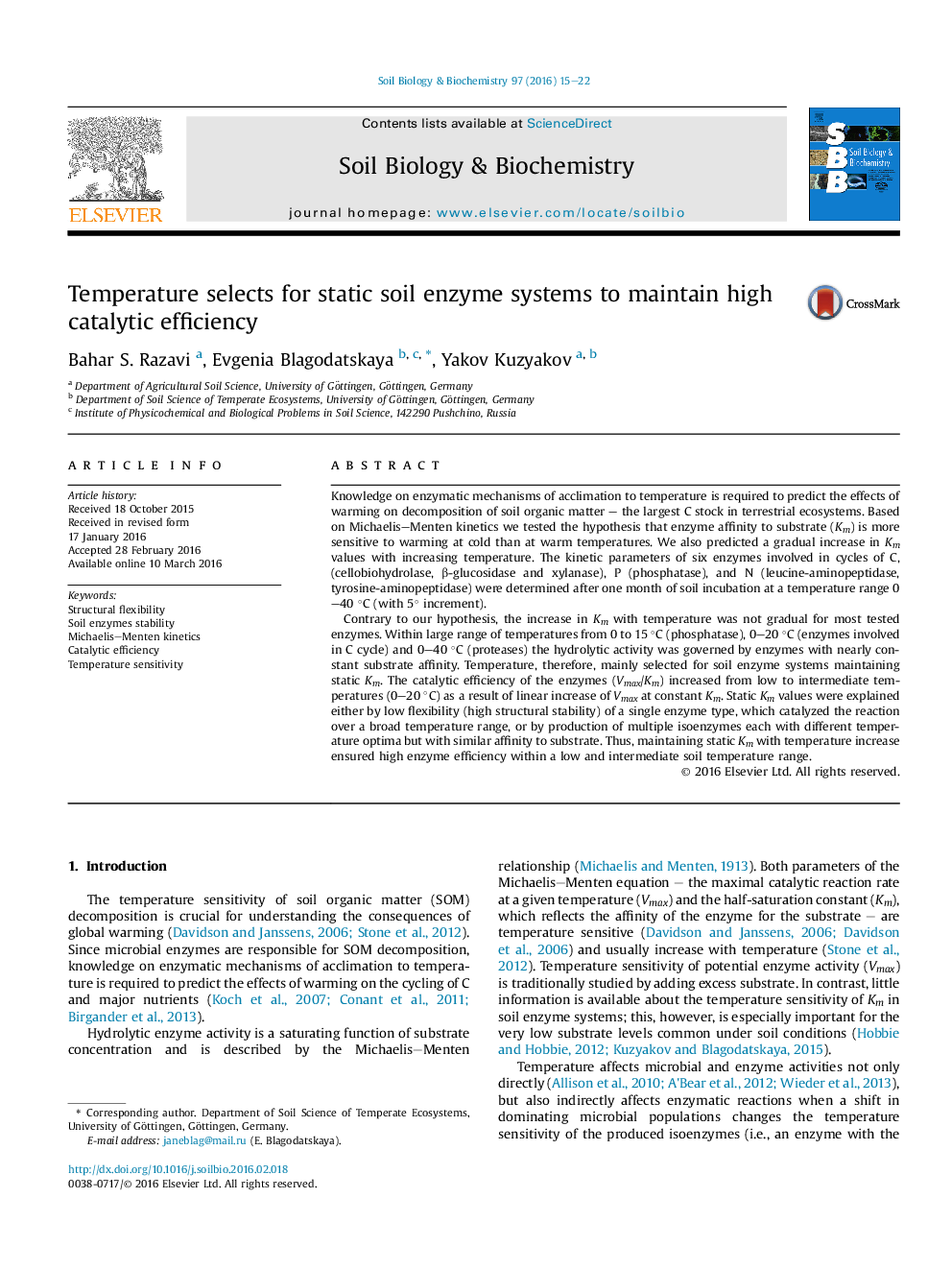| Article ID | Journal | Published Year | Pages | File Type |
|---|---|---|---|---|
| 2024315 | Soil Biology and Biochemistry | 2016 | 8 Pages |
•Unexpectedly static enzymes affinity to substrate within temperatures below 20–25 °C.•Protease systems remained static in the full temperature range tested (0–40 °C).•The constant Km corresponded to a gradual increase of catalytic efficiency with temperature.•Phosphatase was the only enzyme to demonstrate thermal flexibility.•Flexibility was a mechanism partly relevant for warming above 30 °C.
Knowledge on enzymatic mechanisms of acclimation to temperature is required to predict the effects of warming on decomposition of soil organic matter – the largest C stock in terrestrial ecosystems. Based on Michaelis–Menten kinetics we tested the hypothesis that enzyme affinity to substrate (Km) is more sensitive to warming at cold than at warm temperatures. We also predicted a gradual increase in Km values with increasing temperature. The kinetic parameters of six enzymes involved in cycles of C, (cellobiohydrolase, β-glucosidase and xylanase), P (phosphatase), and N (leucine-aminopeptidase, tyrosine-aminopeptidase) were determined after one month of soil incubation at a temperature range 0–40 °C (with 5° increment).Contrary to our hypothesis, the increase in Km with temperature was not gradual for most tested enzymes. Within large range of temperatures from 0 to 15 °C (phosphatase), 0–20 °C (enzymes involved in C cycle) and 0–40 °C (proteases) the hydrolytic activity was governed by enzymes with nearly constant substrate affinity. Temperature, therefore, mainly selected for soil enzyme systems maintaining static Km. The catalytic efficiency of the enzymes (Vmax/Km) increased from low to intermediate temperatures (0–20 °C) as a result of linear increase of Vmax at constant Km. Static Km values were explained either by low flexibility (high structural stability) of a single enzyme type, which catalyzed the reaction over a broad temperature range, or by production of multiple isoenzymes each with different temperature optima but with similar affinity to substrate. Thus, maintaining static Km with temperature increase ensured high enzyme efficiency within a low and intermediate soil temperature range.
Graphical abstractFigure optionsDownload full-size imageDownload as PowerPoint slide
